Oppo Find X3 Neo Review
Oppo Find X3 Neo Review
A worthy alternative to the OnePlus 9
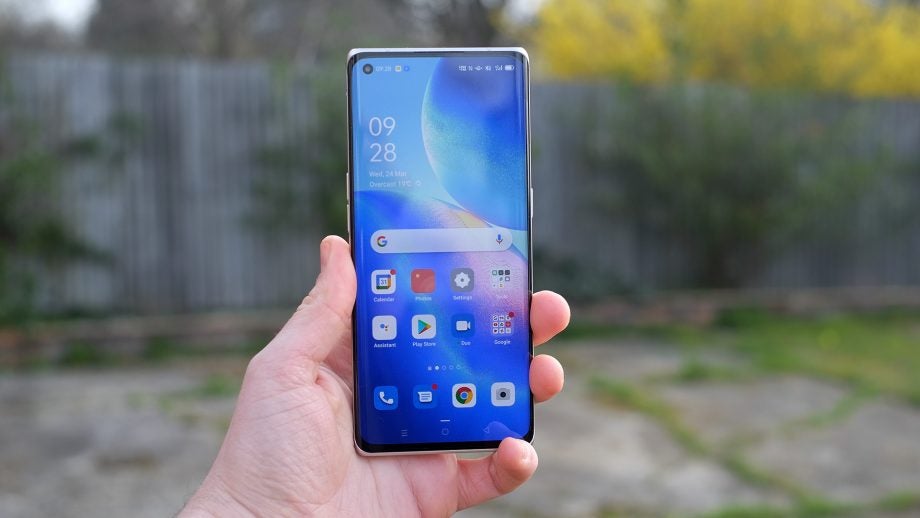
Verdict
The Oppo Find X3 Neo is a worthy alternative to the OnePlus 9 if you value camera zoom and a high-quality build over hardware upgrades that you’d be hard-pressed to notice in reality
Pros
- Versatile camera
- Slim glass and metal design
- Super-fast charging
Cons
- Uses last year’s top processor
- No water-resistance rating or wireless charging
- Pointless macro camera
Key Specifications
- Review Price: £699
- 90Hz OLED screen
- Snapdragon 865
- 65W charging
- 256GB storage
- 12GB RAM
The Oppo Find X3 Neo probably won’t get the attention it deserves. It sits one step below the Oppo Find X3 Pro, and sells for hundreds of pounds less.
However, instead of limiting features and design elements, Oppo has chosen to use some slightly lower-quality hardware instead, which most people are unlikely to notice.
Despite its price, the Find X3 Neo includes a decent dedicated zoom camera and can shoot excellent low-light photos. It features a high refresh rate OLED screen like many of the best phones around. Unlike the OnePlus 9, it sports a glass and metal design rather than the plastic seen in several unnervingly expensive phones.
The Oppo Find X3 Neo’s spangly finish is divisive; ColorOS is few folk’s first choice of interface; and the handset comes with last year’s flagship Snapdragon processor at its heart.
Nevetherless, if you want a more affordable high-end phone that doesn’t leave you feeling as if you’ve missed out then the X3 Neo is one of the best mid-range phones around.
Oppo Find X3 Neo price and availability
The Find X3 Neo costs £699/€799. There’s no USA availability right now, and a straight conversion puts the handset at around $950. You may look at this and think, hmm, that isn’t a great deal when the OnePlus 9 costs £629/€699/$729. However, the Find X3 Neo sits closer to the pricier version of the OnePlus 9 since it comes with 12GB of RAM and 256GB of storage.
It does represent a significant jump in price compared to the Find X2 Neo, though, of around £100.
Oppo Find X3 Neo design and screen – A handset that cuts no corners
- Sparkly finishes
- Metal and glass, with barely any plastic in sight
- Slim 8.7mm depth
We live in a time where phone designs are being downgraded, even on the best Android phones. Screen are getting less curvy, and plastic is becoming more commonplace – on expensive phones, too.
You won’t find such cuts on the Oppo Find X3 Neo. Its front is curved glass. Its back is curved glass with a finger-charming texture, and the sides are aluminium. There’s a smidgeon of plastic along its top edge, but you’re unlikely to touch that part of the device – and it’s coloured, so becomes part of the visual aesthetic of the phone.
This “visual aesthetic” isn’t something that all will appreciate, however. I have the off-white version of the Oppo Find X3 Neo, and it’s the sort of phone you might develop if you took a OnePlus 9 Pro and focus-grouped it with a bunch of 8-year-olds.
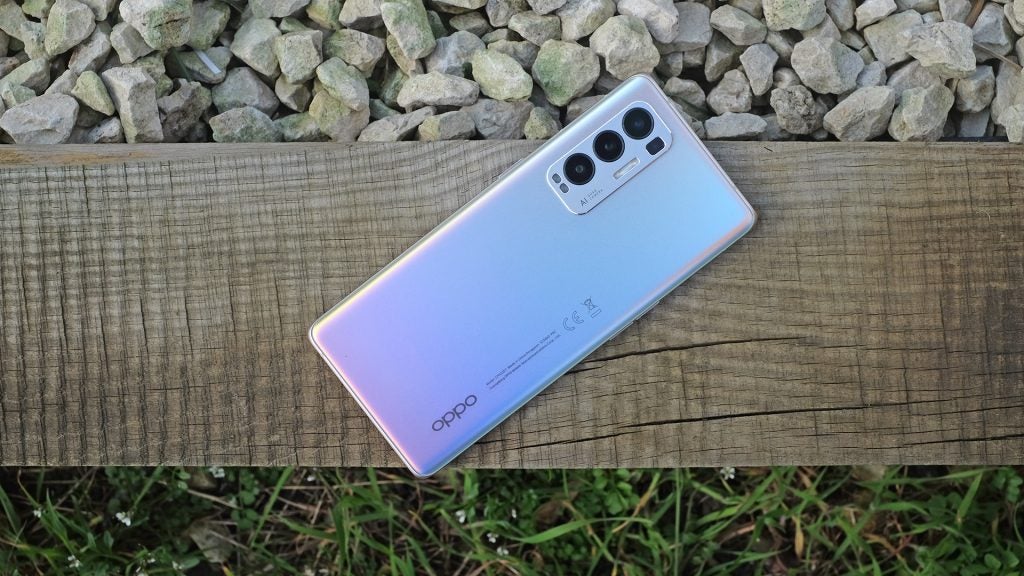
Viewed from the right angle, the matte finish fires a rainbow of colours off its back. Oranges and blues cascade into each other, turning to greens and purples at a more extreme angle. It’s sparkly. It’s bold. And it may not be what you expect having seen images of the handset online.
The Oppo Find X3 Neo looks similar to a OnePlus, minus the classy reserve of those phones. I don’t hate it, but I strongly suggest you consider if this is what you want. The darker version of the Neo also has a sparkly finish, minus the rainbow lightshow.
The Find X3 Neo also lacks a water-resistance rating, although this shouldn’t be a surprise at this price.
I have no other complaints about the Oppo Find X3 Neo’s outer hardware. The combination of the curve of the front screen and aluminium sides feels lovely – a clear cut above the OnePlus 9. Its 72.5mm width shouldn’t be a stretch for most hands accustomed to today’s sizeable devices, and the in-screen fingerprint scanner is fast.
The Oppo Find X3 Neo speakers, too, are solid. There are two: one sits along the bottom edge of the handset, and you’ll find the other above the display. They aren’t quite as loud and beefy as those on the OnePlus 9 Pro – podcasts may struggle to compete with the sound of a kettle boiling 30cm away – but they’re punchy.
Oppo has chosen to include a 6.55-inch OLED on the Find X3 Neo. It has a 2400 x 1080 pixel screen, not the 1440p one found on the Find X3; and it has a 90Hz refresh rate, not the 120Hz of the Find X3 and the OnePlus 9 Pro.
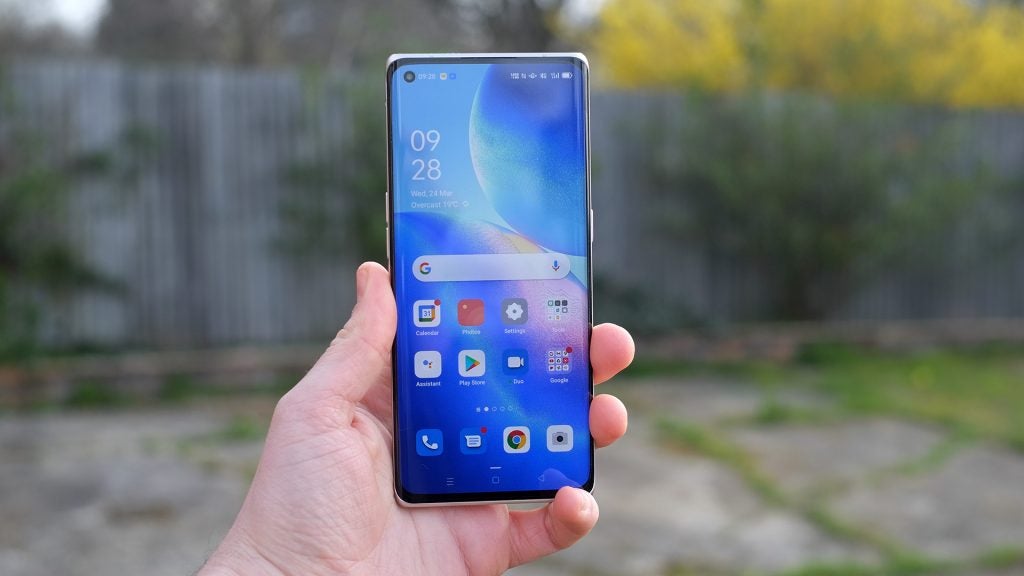
Theoretically, this should result in a slightly less-smooth scrolling motion than seen with the OnePlus 9, which also has a 120Hz display. However, I’ve noticed slight motion trails when scrolling black text on a white background. Nevertheless, it’s still going to scroll smoother than an iPhone 12 Pro Max.
Colour is designed to match the rich DCI-P3 colour standard, so tones look vivid.
Plus, the Find X3 Neo includes the feature that I’ve found makes the most difference when switching from a lower-mid range phone to a higher mid-range phone such as this: a backlight booster. This ramps up the brightness to ~1100 nits when the phone senses it is in more dazzling environments.
The feature proves a godsend if you’re shooting photos on a bright day; the preview image simply isn’t that clear on lower-end screens that have roughly half the peak brightness.
Oppo Find X3 Neo camera – A match for the OnePlus 9 series?
- Wide/main/zoom combo is great for a mid-range priced phone
- Takes okay zoomed images at up to 5x
- Poor macro
The Oppo Find X3 Neo has four cameras, three of which are well worth using. The fourth is a 2-megapixel macro that takes poor photos and which seems to have been included here primarily to make up the numbers.
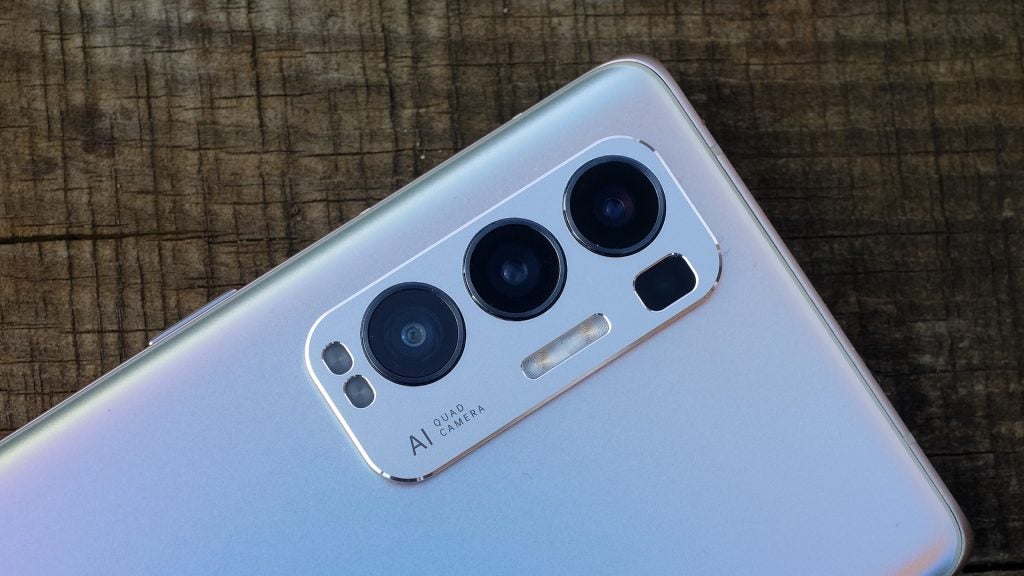
The main camera benefits from a rather lovely 50-megapixel Sony IMX766 sensor. OnePlus uses this same sensor in the 9 Pro’s ultra-wide camera, which would usually be a red flag as secondary cameras tend to be of lower overall quality. But Oppo also employs the IMX766 for the main and wide cameras in the more expensive Find X3 Pro. Clearly, this is no junk sensor.
The Oppo Find X3 Neo also includes a 16-megapixel wide and a 2x zoom, which uses a 13-megapixel Samsung sensor.
I carried out much of my testing before looking into the Find X3 Neo’s tech specs, to evaluate its photos without being swayed by the hardware.
The camera app here presents as if it has a periscope zoom. There are 2x and 5x zoom presets, and all of my favourite photos are 5x shots.
It’s counterintuitive, since in this mode, the Oppo Find X3 Neo uses a “hybrid” crop of the 2x zoom. Image quality only just holds up at 5x, but the phone uses a tailored image-processing profile that makes photos look completely different to a manual crop of the 2x zoom.


This is one of the better hybrid zoom modes I’ve seen in a mid-range phone. However, in certain lighting conditions the Find X3 Neo seems to revert to using a crop of the primary sensor even at 5x, resulting in weird-looking oversharpened images. And, at times, there’s significant purple fringing at 5x.
I wish the Oppo Find X3 Neo had a true 5x periscope zoom, but that would have been a big ask at this price. Nevertheless, I have a lot of time for this 5x feature, warts and all.
The Oppo Find X3 Neo primary camera captures lovely images at 1x, with a tendency towards a warm colour cast. The OnePlus 9 Pro’s colour accuracy is better than the Find X3 Neo much of the time, but this phone didn’t take any shots where I questioned the reasons that such colour tone decisions were made.

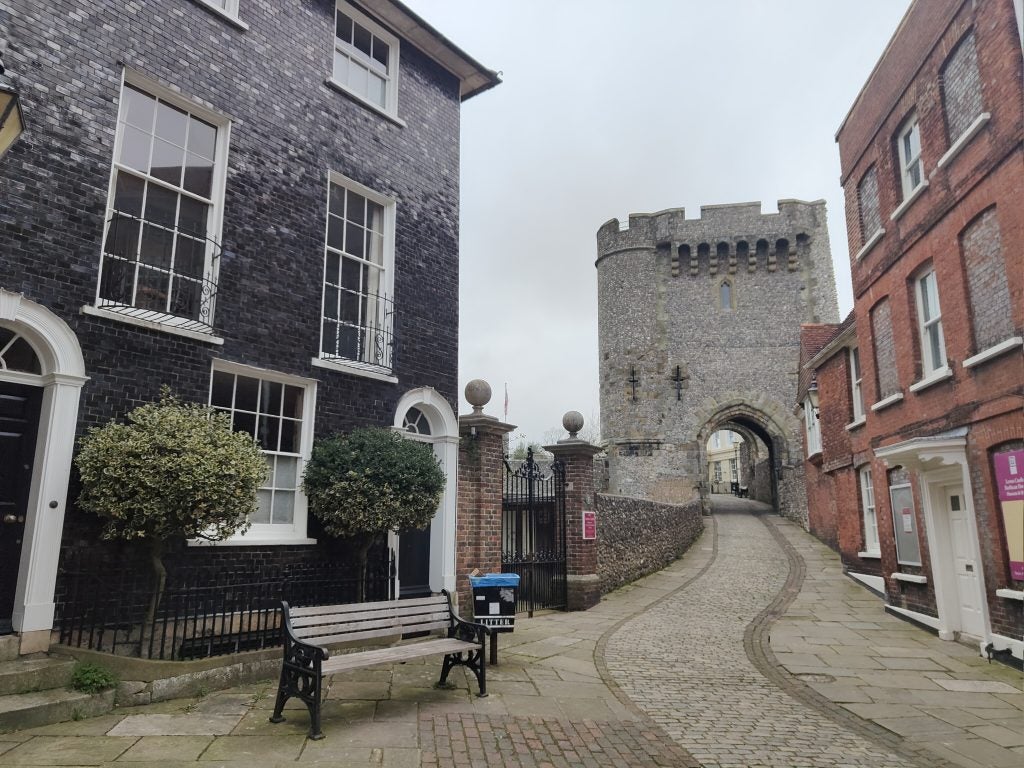
Its 16-megapixel wide camera isn’t at the same level as the OnePlus 9’s, but it’s sharper than the iPhone 12’s.
I like Oppo’s approach here. It has spread its budget to offer you an impressive main camera and both a good wide and zoom, rather than leaving out any bonus focal lengths. And it means you can have more fun taking pictures with the Oppo Find X3 Neo than you can with a OnePlus 9. Fun matters, right?
The one area that I think Oppo could have improved without blowing the budget is shadow detail retrieval in HDR photos. Like every good phone, the Find X3 Neo uses clever techniques to lift the shadows when you shoot an image with, say, a bright but cloudy sky in the scene. But the OnePlus 9 Pro and Samsung Galaxy S21 seem to do a far better job at brightening a foreground dulled by powerful highlights in the sky. After taking a look at a few underexposed-looking foregrounds in Photoshop, I think Oppo could have pushed the shadows a little further.
Strangely, things flip with the selfie camera. The Oppo Find X3 Pro will apply masses of HDR processing to selfies, if required. You can shoot indoors with a background of a much brighter window and the phone will handle it just fine. However, actual image quality of the front camera is just okay. The Oppo Find X3 Neo tends to leave facial details looking soft in compromised lighting compared to the best sub-£1000 phones.
However, the Night mode is effective. This can be used in all four fields of view with the rear cameras, and the selfie camera.
The Oppo Find X3 Neo doesn’t have a perfect camera array, then, but I commend the choices Oppo has made. It maxes-out on the kind of photos you can take, and features such as the Night mode help to mask the slight compromises in hardware at £700, rather than over £1000.
There’s no 8K video mode here, but the Oppo Find X3 Neo offers good-quality stabilised 4K video at up to 60fps. You may want to stick to 4K/30, since this seems to result in better images if you switch to a zoomed-in field of view mid-shoot. I’d guess this is because the zoom camera can’t actually capture 4K/60, so the phone uses a basic crop of the main sensor instead.
Colour is oversaturated in 4K videos and stabilisation isn’t perfect. However, the Oppo Find X3 Neo does have an Ultra Stable mode, which crops into the view a little more and drops the resolution to 1080p. Curiously, this mode also fixes 4K video’s oversaturated colour.
Standard 1080p doesn’t suffer from oversaturation. My best guess is this is the result of a software bug in 4K video that causes Oppo’s AI Highlight mode to switch on, whether you want it or not. And judging by my results, you don’t. Once this is fixed, the Oppo Find X3 Neo should be a great 4K video shooter.
Oppo Find X3 Neo software and performance – Not the latest internals, but still powerful
- Last year’s Snapdragon 865, but still powerful
- Generous storage and RAM (256GB/12GB)
- ColorOS is not the most desirable interface
Oppo also makes a smart compromise when it comes to the Find X3 Neo’s processor. It includes the Snapdragon 865 CPU rather than the latest Snapdragon 888.
This is a much better choice than dropping to one of Qualcomm’s 7-series chipsets, which would make the Oppo Find X3 Neo appear a poor deal.
The company could have used the new Snapdragon 870, which seems more desirable since it’s a newer chip – but the difference between the two is so slight it isn’t worth worrying about.
High-end games such as Fortnite run well, although that game won’t let you use the 60fps mode available to phones with the Snapdragon 888, and other recent top-end chipsets. I don’t believe the use of the older Snapdragon will put off the majority. It remains a powerful processor, much more so than a true mid-range 7-series chip.
The allocation of 256GB of storage and 12GB of RAM is generous, and means the phone costs less than the OnePlus 9, which is £729 once you have made the jump to that amount of storage.
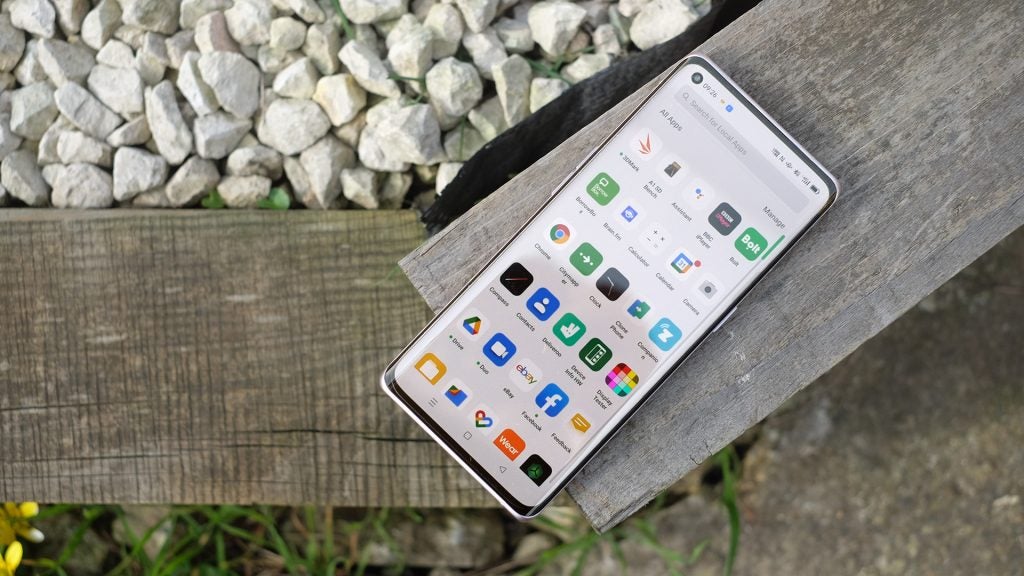
The Oppo Find X3 Neo’s ColorOS software is something to consider, though. This is Oppo’s Android skin, and it isn’t the slickest-looking one around; it isn’t as attractive as OnePlus’s OxygenOS or Samsung’s take.
There’s plenty of customisation on offer, though. You can switch the Oppo Find X3 Neo’s icon shapes, the size of them and the size of the graphic inside. This lets you alter ColorOS’s character quite dramatically. But you can’t change the fundamental appearance of the app menu, which doesn’t have the coherent style of the best.
Is ColorOS enough of a reason to discount this handset if you’re impressed by the rest of the offering? I don’t think so. You’ll become accustomed to the look within a day or so, and the system layout is much like Google’s default. You flick up from the screen to access the app menu and there are far fewer bloaty apps here than you’d find on a Samsung Galaxy phone.
Oppo also provides an option to switch to a style that has no app drawer at all. This is the default, which is perhaps the reason ColorOS doesn’t have the most stylish app page going.
Oppo Find X3 Neo battery life – It will get you through the day
- Solid one-day battery life
- Super-fast charging
- No wireless charging
The Oppo Find X3 Neo features a 4500mAh battery, which is the sort of capacity you’d find in ultra-thin phones whose designs wouldn’t be able to accommodate a 5000mAh capacity unit or more.
I don’t consider this an ultra-long-lasting phone; it will need to be charged every day. Through testing, and on busy days in particular, I haven’t tended to see a huge amount of charge left by the time I plug it in before bed.
However, I does last longer than either the OnePlus 9 or OnePlus 9 Pro. This could be down to a different, more restrictive, approach to handling background processes. Or, it could be that the 90Hz screen is a little less power-hungry.
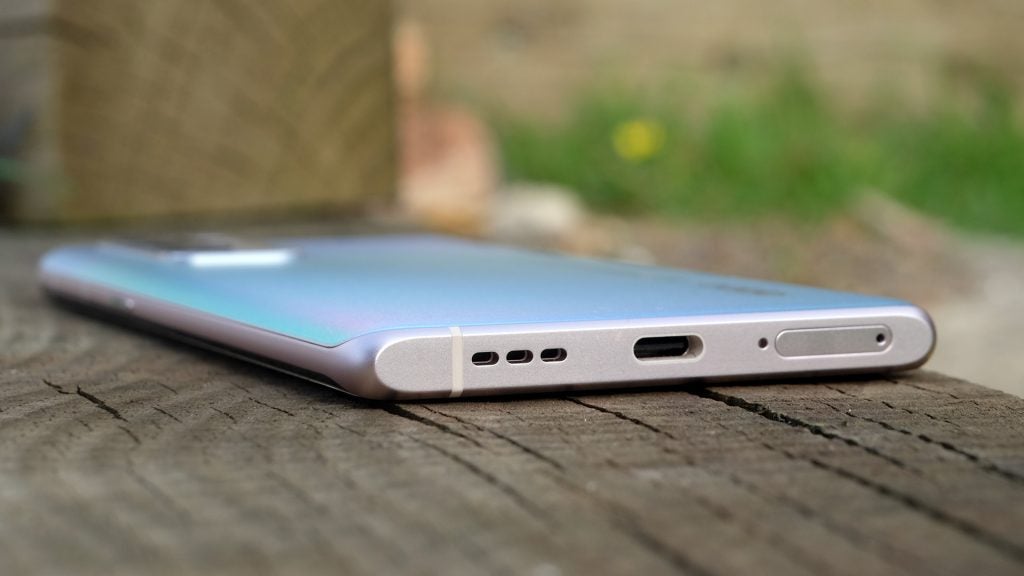
The end result is the identical to what I see in virtually every flagship-style handset. You certainly won’t see the two-day stamina of lower-end devices such as the Redmi Note 10 Pro, but most people will probably be satisfied.
Charging speed is fantastic, too, thanks to the 65W charger and use of two battery cells, charged concurrently. A 10-minute charge (starting at 39% battery) added 37% to the battery and a full charge from flat took under 40 minutes.
There’s no wireless charging support, however, which may put off some.
Oppo Find X3 Neo conclusion
The Oppo Find X3 Neo is a worthy alternative to the OnePlus 9 if you value camera zoom and high-quality build over hardware upgrades that you’d be hard-pressed to notice in reality.
You should buy the Oppo Find X3 Neo if…
- You want an affordable high-end phone with a wide spread of features
The Oppo Find X3 Neo is a bit like the OnePlus 9’s cousin. It doesn’t have that phone’s new top-end processor or 120Hz refresh rate, but it does have a proper zoom camera and a much fancier design with a curved-glass front and metal sides. You get bonuses you’ll notice day-to-day, and small cuts you probably won’t.
You should not buy the Oppo Find X3 Neo if…
- You hate sparkles
The Oppo Find X3 Neo comes in two colours, black and a sort-of pearlescent rainbow. Both use matte glass on the rear, and are very sparkly. It’s a bold look that won’t be for everyone.
- The latest top-end CPU is a must
You get last year’s Snapdragon 865 here. Noticeable performance differences between this and the new Snapdragon 888 are slight, but you can get the OnePlus 9 for similar money if you’d rather have extra power over the Oppo’s particular strengths in camera zoom and build quality.
Specifications
How we test phones
We test every mobile phone we review thoroughly. We use industry standard tests to compare features properly and we use the phone as our main device over the review period. We’ll always tell you what we find and we never, ever, accept money to review a product.


